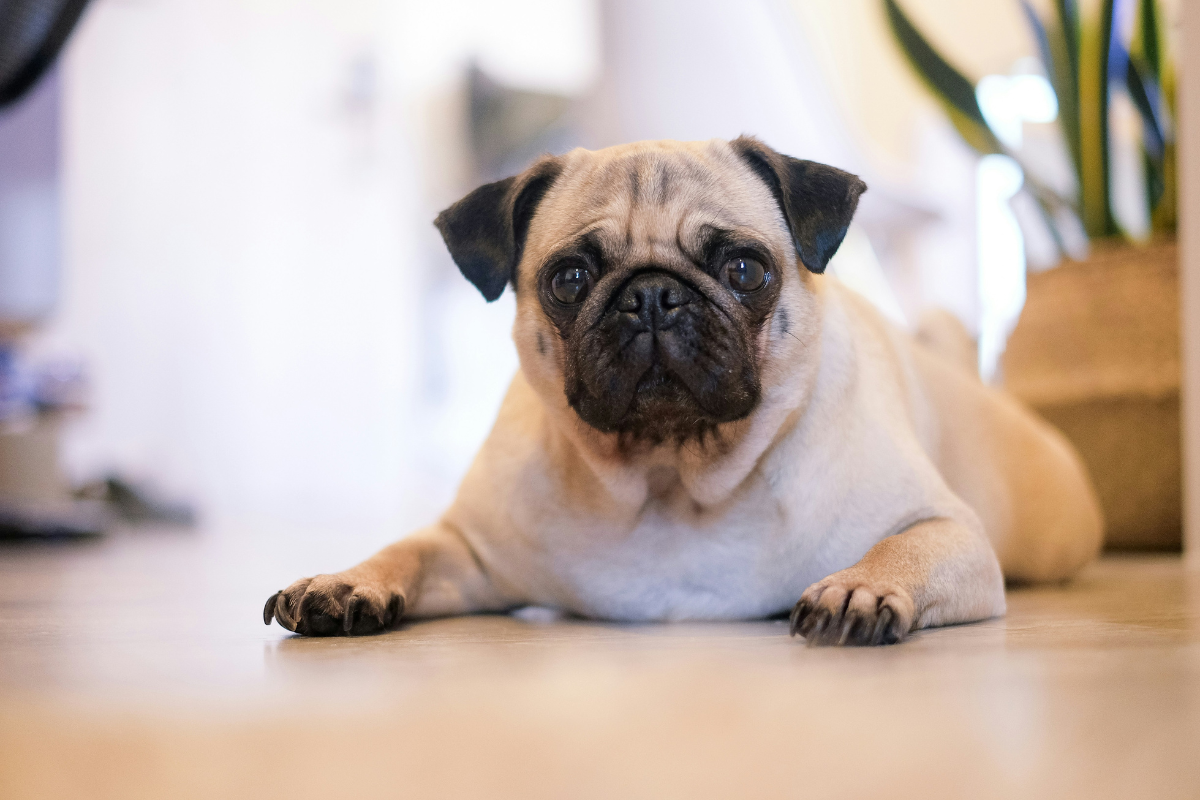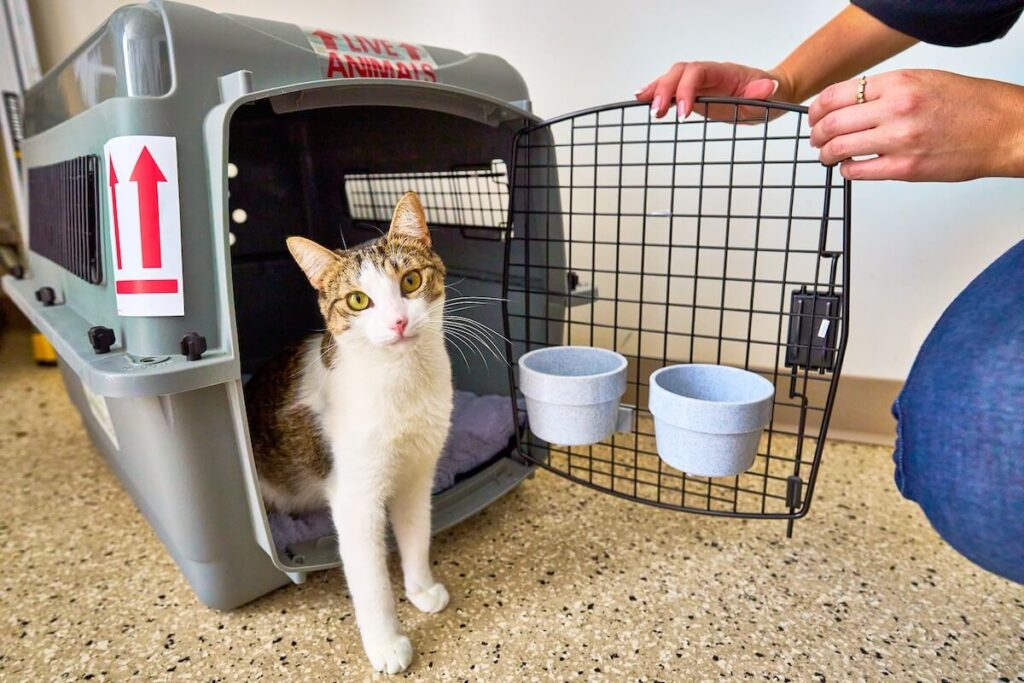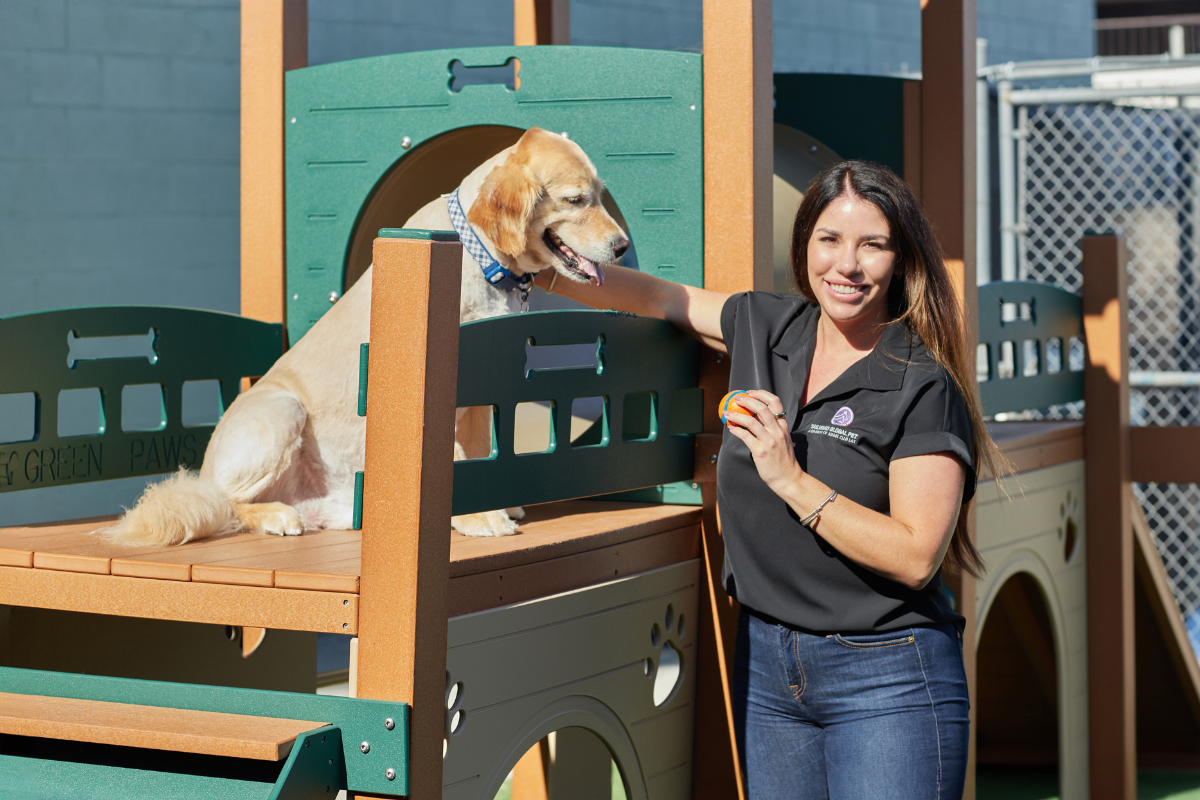
Bringing your pet to Peru? We’ve handled hundreds of pet exports to South America — let us help with yours.
Bringing your pet to Peru is a manageable process with proper planning. While Peru has specific health and documentation requirements for you to meet ahead of your trip, it doesn’t require quarantine for dogs and cats that meet all entry rules.
Requirements from there can vary depending on your travel route and pet type. This guide covers Peru’s main pet import regulations, airline restrictions, and essential steps to ensure your pet’s journey is safe, smooth, and stress-free.
Eligible Pets and Country Restrictions
Peru welcomes pet arrivals from most countries without major entry limitations. However, the airline you choose for animal transport may limit certain breeds.
Eligible Pets
The country’s animal health authority, Servicio Nacional de Sanidad Agraria del Perú (SENASA Perú), does not maintain a national list of banned or restricted breeds.
While Peru lacks federal “dangerous dog” legislation similar to other South American countries, local municipalities may have their own leash, muzzle, or registration rules for certain dogs. This includes dogs with a history of dangerous behavior and breeds often described as “dangerous” dog breeds. It’s always a good idea to check local ordinances in your destination city.
Airlines may enforce their own transport policies. Many carriers, including LATAM, our preferred carrier for pet travel to Peru, limit travel for snub-nosed (brachycephalic) breeds due to breathing risks during flights. That includes breeds like bulldogs, pugs, boxers, and Persian cats.
LATAM also restricts dogs categorized as “dangerous breeds” from traveling in the aircraft hold. These pets may only be accepted through LATAM Cargo.
It’s important to note that some short-snouted breeds, like bully-type dogs and mastiffs, overlap with those often considered high-risk, so it’s best to check an airline’s policy well in advance.
If your pet can’t travel in the cabin or hold, a professional pet relocation specialist can help you come up with the best options to get them to Peru safely.
In addition to dogs and cats, Peru allows certain small or exotic pets to enter, such as birds and guinea pigs, though these animals may require additional permits or inspections. Some species are prohibited or restricted due to disease risk in their country of origin.
Peru restricts importing live birds and hatching eggs from U.S. states with reported Highly Pathogenic Avian Influenza (HPAI) in commercial poultry, for example. Pet rabbits from the U.S. are banned altogether due to outbreaks of Rabbit Hemorrhagic Fever.
Approved Countries
Peru doesn’t restrict entry for pets based on origin, but SENASA Perú may impose additional health requirements for animals coming from areas affected by infectious disease outbreaks. There are no such bans in effect for different countries at this time.
Planning an international flight for your pet? We can help.
Microchip and Vaccinations
Pets entering Peru are not required to be microchipped. Dogs and cats will need a series of vaccinations, including rabies, ahead of their trip.
Microchip
Peru does not mandate microchipping for pets entering the country. At Tailwind, we strongly recommend getting your pet implanted with an ISO-compatible microchip, though, before any big trip.
These globally recognized chips can be scanned pretty much anywhere, making it far easier to reunite with your pet if they’re ever lost. A microchip number is also essential if you plan to re-enter the United States with your pet in the future.
Vaccinations
Cats and dogs entering Peru must be protected against rabies. Pets over 3 months of age are required to have a valid rabies vaccination administered at least 21 days before travel and within the period of validity specified by the vaccine. The rabies shot must be documented on the official veterinary health certificate that travels with your pet.
Pets under 3 months aren’t required to have a rabies vaccine to meet federal import requirements, but they’ll likely face obstacles on the carrier side. Most airlines require that pets be a minimum of 16 weeks old before flying in-cabin or as air cargo.
In addition to rabies, Peru requires dogs to be fully vaccinated against the following common infectious diseases within 12 months of their arrival:
- Canine parvovirus
- Canine distemper
- Canine hepatitis
- Leptospirosis
Cats must be vaccinated against the following, in addition to rabies, within 12 months of their arrival:
- Feline viral rhinotracheitis
- Feline calicivirus
- Feline panleukopenia (feline distemper)
The required shots for cats can come in the form of the FVRCP combination vaccine. We always recommend talking with your vet about any additional vaccines that may make sense for your pet, especially if they’re older or have existing health conditions.

Blood Tests and Treatments
Peru does not require a rabies titer for pets entering the country. All dogs and cats are required to receive internal and external parasite treatments within 30 days of arrival. Your pet’s health certificate must clearly state the active ingredients, dosage, and date of application of treatments.
Import Documents
Pets entering Peru do not need a special import permit, but they must travel with a current health certificate issued by a USDA-accredited veterinarian. For pets coming from the U.S., the certificate must have a USDA endorsement within 10 days before travel.
The health certificate must confirm that your pet is in good general health, free from internal and external parasites, and up to date on all required vaccinations.
Dogs and cats can use the same type of health certificate, while birds and guinea pigs get their own versions. (Exotic pets like ferrets or lizards and other live animals may also need species-specific documentation, but SENASA Perú is your best resource for that.)
All certificates should be presented in both Spanish and English to ensure smooth inspection at Peruvian customs.
International airlines usually request a copy of the health certificate at check-in. For peace of mind, carry at least one extra copy on any major international trip with your pet.


Airline Options
Several major airlines fly pets from the U.S. to Peru, but LATAM Airlines is our preferred carrier for most routes. LATAM offers direct flights from Los Angeles (LAX) to Lima (LIM) and is known for its well-managed pet transport services from the U.S.
Small dogs and cats that meet the airline’s size and weight limits can travel in the cabin. Larger pets that don’t fit under the seat must fly as checked baggage or via LATAM Cargo, which is often the best option for long-haul flights.
Pets in the cargo hold travel in a pressurized, climate-controlled compartment, so it’s a safe way for pets to travel. It can also reduce layovers and stress compared to connecting flights, especially on long-haul international itineraries.
Dogs on LATAM’s dangerous breed list must travel via LATAM Cargo, while some brachycephalic (short-nosed) breeds are only accepted in-cabin if size permits.
Other carriers, such as Copa Airlines and Avianca, also serve Peru. Copa typically connects through Panama City, while Avianca routes through Bogotá. Both allow small pets in the cabin but may restrict certain breeds from traveling in cargo.
If you’re traveling with a breed facing restrictions on the most common carriers flying to Peru, we can help. We always review your pet’s breed and documentation in advance to ensure compliance with airline rules, and we can work with you on solutions if they’re not a good fit.
Quarantine
There is no mandatory quarantine for dogs or cats entering Peru, provided they meet all vaccination, parasite treatment, and rabies certificate requirements. Upon arrival, pets are inspected by SENASA officials at the airport and directly released to the pet owners.

Returning to the USA
Peru is considered a high-risk country for rabies, which means pets returning to the U.S. must comply with CDC requirements to avoid quarantine upon arrival.
For dogs with a history of rabies vaccination in the U.S., you’ll need a CDC Dog Import Form receipt and a Certification of U.S.-Issued Rabies Vaccination. You can complete the import form online, but a USDA-accredited vet must complete the Certification of U.S.-Issued Rabies Vaccination form before your dog leaves the U.S.
This certification confirms that your dog’s vaccinations are valid and that it’s microchipped with a universal scanner-compatible microchip to meet entry requirements and customs clearance.
If your dog doesn’t have a valid rabies vaccination certificate or the proper documentation, a rabies antibody titer and/or a 28-day quarantine at a CDC-registered facility may be required.
Despite its status as a higher-risk country for rabies, Peru is a safe country to travel to with pets. Beyond vaccination coverage and health certificates, cities like Arequipa and Lima are generally pet-friendly. Prepare for heat and terrain considerations in more remote parts of the country, especially with older or anxious pets.
How Tailwind Can Help
Traveling to Peru with your pet involves navigating vaccinations, parasite treatments, health certificates, and airline regulations to ensure your pet travels safely and without delays.
The same is true of any destination, whether you’re flying your pet across the country or planning a big international move.
At Tailwind Global Pet, we coordinate every step of the journey to make your pet’s trip stress-free, no matter where they’re going. From tapping into our vast expertise to address breed restrictions to booking the best routes with trusted carriers, we handle all aspects of pet shipping.

Ready to get started? Each pet relocation situation is different, so to get an idea of the costs involved, fill out a request for a free quote.
What Our Clients Have to Say

“My dog Azumy traveled from Peru to Portland with a layover in LAX for the CDC process, and when searching for the best and safest option we chose TAILWIND GLOBAL PET.
I want to thank all the staff (Jazmin, Brady and Mark especially). I called several times to ask questions, and we were in contact by email. They made me feel welcomed and safe. They were in contact with me throughout the whole process (even on WhatsApp), and when I landed in Los Angeles they arrived in less than 10 minutes to pick up Azumy. My dog was there at 10am and she was done being processed by 1:30 the same day. They texted me to let me know when she was ready so I could go pick her up.
They went the extra mile anytime they had the opportunity and helped me with the whole process for the kennel, placing the labels, and even gave me a blanket for her kennel. They verified that I met the requirements for Alaska Airlines and when they saw that I was alone and I was staying in a dicey motel they helped me by taking everything to my motel straight to the elevator.
I want to thank all the staff at Tailwind Global Pet with all my heart; my family is so grateful.
I would 100 percent recommend this wonderful staff, and amazing service!!!”
– Seth G.

“We sent out our pet dog over to Argentina the service was amazing! They were quick to respond to our emails and as well as giving us a quote on our pet. We had sent out many requests for our pet and many told us they couldn’t send her out Kennel Club LAX got the job done! Thank you very much for getting our pet to Argentina!”
– Leslie P.

“We imported our 2-year-old Husky from a high-risk rabies country into the United States. What sets Tailwind apart from other companies is that they first review the documents without requiring a deposit, and then guide you through the booking process. Jasmine and Michael supported us at every step. The airline staff immediately moved the crate from the cargo section to the area near the passenger baggage carousel after landing. After meeting with the Customs and Border Protection officer and presenting our documents, we were able to bring our dog outside the airport area. A driver arrived, collected the crate, and transported it to the nearby facility. After 24 hours, once the vaccination and examination were completed, our dog was released to us. At our request, and for an agreed fee, they even delivered her directly to us. I definitely recommend this company’s services and truly appreciate all their efforts.”
– Ardavan J.
